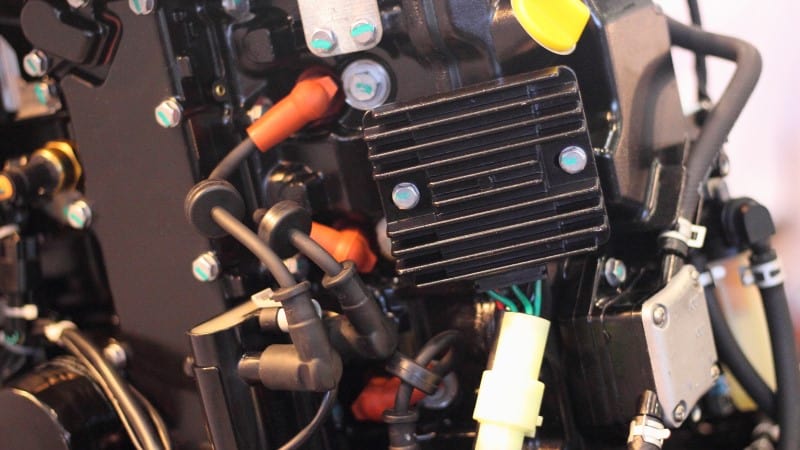How Do You Test A Ignition Control Module

The Ignition Control Module (ICM), a critical component in older and some modern ignition systems, plays a vital role in timing and triggering the ignition coil to fire the spark plugs. Diagnosing a faulty ICM can be challenging, requiring a systematic approach and a solid understanding of its function. This article will delve into the testing procedures, alternative technologies, reliability aspects, and future trends surrounding the ICM, providing automotive professionals with the knowledge necessary for efficient and accurate diagnosis.
Understanding the Ignition Control Module
The ICM's primary function is to receive signals from the crankshaft position sensor (CKP) and/or camshaft position sensor (CMP), process these signals, and then ground (or interrupt the ground) for the primary winding of the ignition coil at precisely the correct time. This grounding and ungrounding action collapses the magnetic field in the coil, inducing a high-voltage pulse in the secondary winding, which then fires the spark plug. Different ICM designs exist, including those integrated with the distributor (typically older systems) and those that are stand-alone units controlling multiple coils (coil-on-plug or CNP systems).
Testing the Ignition Control Module: A Step-by-Step Guide
Before suspecting the ICM, it's crucial to rule out other potential issues such as faulty sensors (CKP/CMP), wiring problems, or a defective ignition coil. Here's a step-by-step approach to testing the ICM:
- Visual Inspection: Check for any physical damage, corrosion, or burnt components on the ICM and its connector. Look for signs of overheating.
- Power and Ground Verification: Using a multimeter, verify that the ICM is receiving the correct voltage (typically battery voltage) and has a good ground connection. Refer to the vehicle's wiring diagram for specific pin assignments and voltage requirements. A weak ground can mimic ICM failure.
- Input Signal Check (CKP/CMP): Use an oscilloscope to examine the signals from the CKP and CMP sensors. These signals should be clean and consistent. A missing, distorted, or erratic signal indicates a sensor or wiring problem, not necessarily the ICM. Consider using a lab scope to ensure proper waveform functionality and voltage range.
- Output Signal Check (Coil Trigger): With the engine cranking (or simulated cranking using a diagnostic tool), use an oscilloscope or logic probe to check for a trigger signal being sent from the ICM to the ignition coil. A missing or erratic trigger signal, after verifying proper input signals and power/ground, strongly suggests a faulty ICM. Note the dwell time – the duration the coil is charged – which should be within specifications.
- Continuity Testing: Disconnect the ICM and use a multimeter to check the continuity between various pins, comparing the results to the vehicle's wiring diagram or a known good ICM. This can reveal internal shorts or open circuits.
- Dynamic Testing (if possible): Some advanced diagnostic tools can perform dynamic testing of the ICM, simulating engine operating conditions and monitoring its performance. This can help identify intermittent faults that may not be apparent during static testing.
Alternatives to the ICM: Coil-on-Plug (COP) and Distributorless Ignition Systems (DIS)
Modern vehicles have largely moved away from traditional ICM-based ignition systems in favor of Coil-on-Plug (COP) and Distributorless Ignition Systems (DIS). These systems offer several advantages:
- COP: Each cylinder has its own dedicated ignition coil, eliminating the need for a distributor and reducing energy loss. The ECU directly controls each coil, providing precise ignition timing and increased spark energy.
- DIS: Uses multiple coils (typically one coil per two cylinders) without a distributor. The ECU controls the firing of the coils based on sensor inputs.
Pros of COP/DIS:
- Improved fuel economy
- Reduced emissions
- More precise ignition timing
- Increased spark energy
- Greater reliability (fewer mechanical parts)
Cons of ICM-based Systems:
- Less precise ignition timing
- Lower spark energy
- More susceptible to mechanical failure (distributor)
Reliability and Maintenance
ICMs are generally reliable components, but they can fail due to heat, vibration, and electrical stress. Overheating is a common cause of ICM failure, so ensuring proper cooling is essential. This includes checking the heat sink (if equipped) and ensuring that it is properly mounted and free of debris. Regularly inspect wiring harnesses and connectors for damage or corrosion. Use dielectric grease on connectors to prevent corrosion and ensure good electrical contact.
Future Trends
While ICMs are becoming less common in newer vehicles, they still exist in many older cars. Furthermore, the fundamental principles of ignition control remain relevant. The future of ignition systems lies in increasingly sophisticated electronic control, with the ECU playing a more central role in managing spark timing, dwell time, and even individual cylinder control. Advancements in sensor technology and engine management systems will further optimize combustion efficiency and reduce emissions.
Conclusion
The Ignition Control Module, though a simpler technology than its modern counterparts, remains a vital component in many vehicles. Understanding its function, proper testing procedures, and the advantages of newer ignition systems is essential for automotive professionals. As the automotive industry continues to evolve towards more complex and electronically controlled systems, a strong foundation in fundamental principles, like those governing the ICM, will be crucial for diagnosing and repairing future generations of vehicles. The emphasis will be on understanding complex sensor networks and ECU logic, requiring advanced diagnostic tools and training. The lifespan of the ICM equipped cars will continue, so understanding it will remain a valuable asset for auto professionals.
